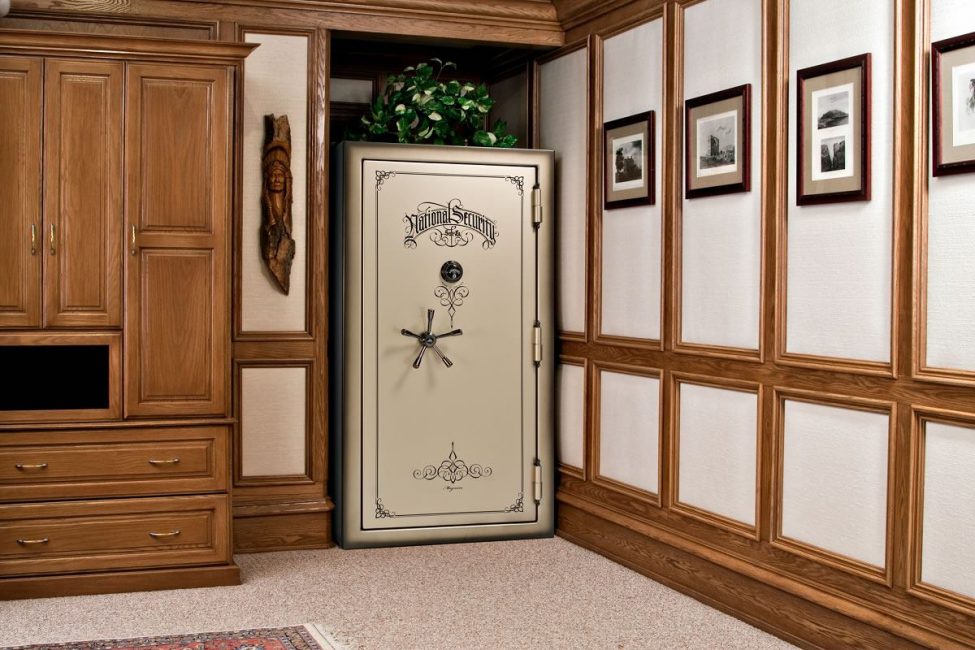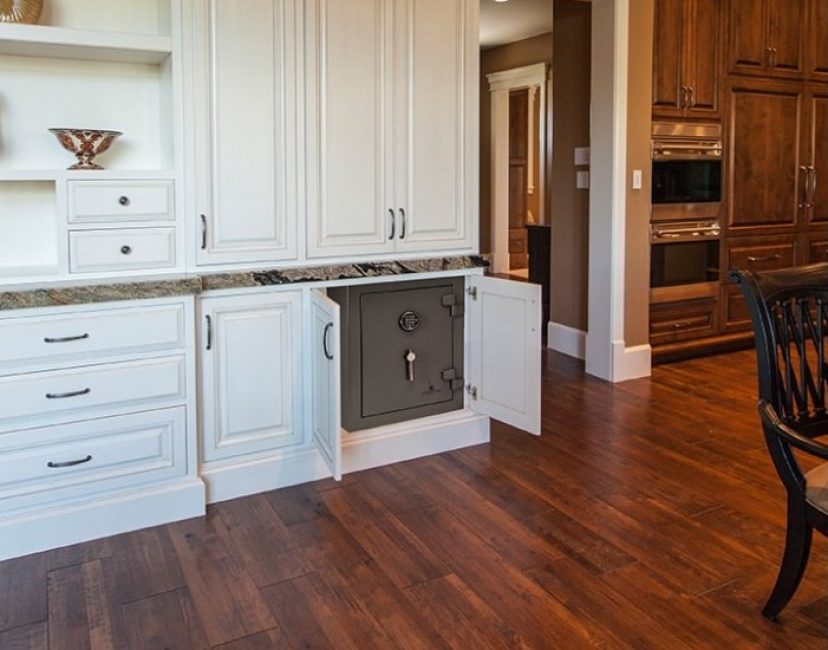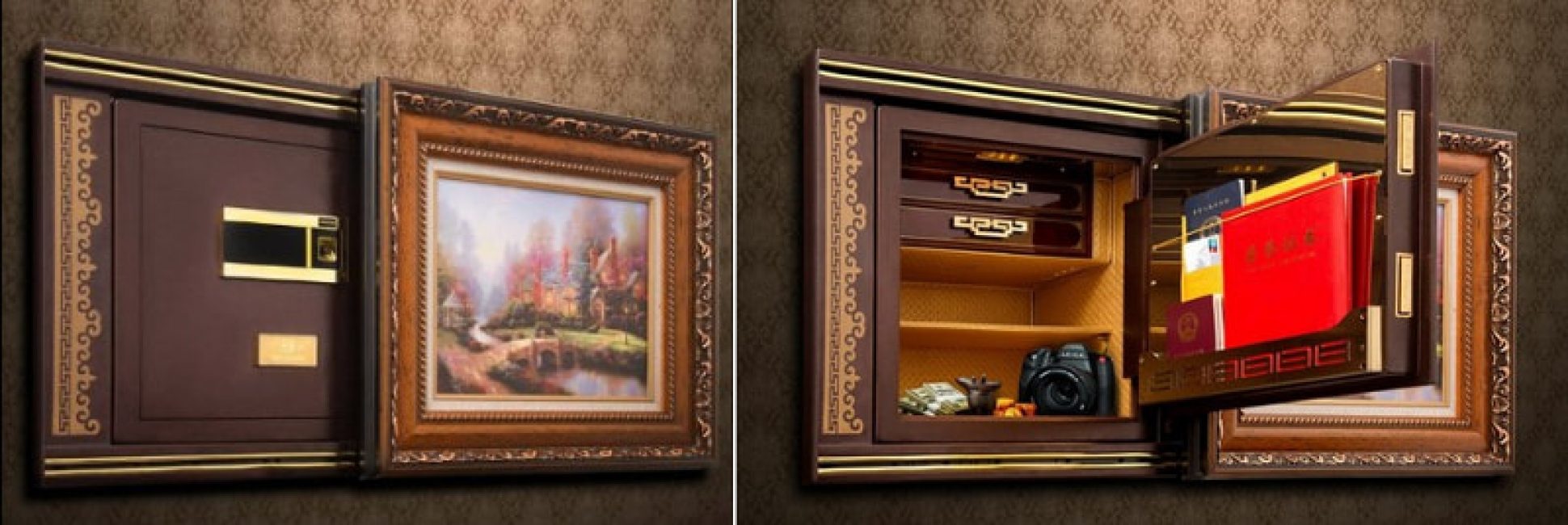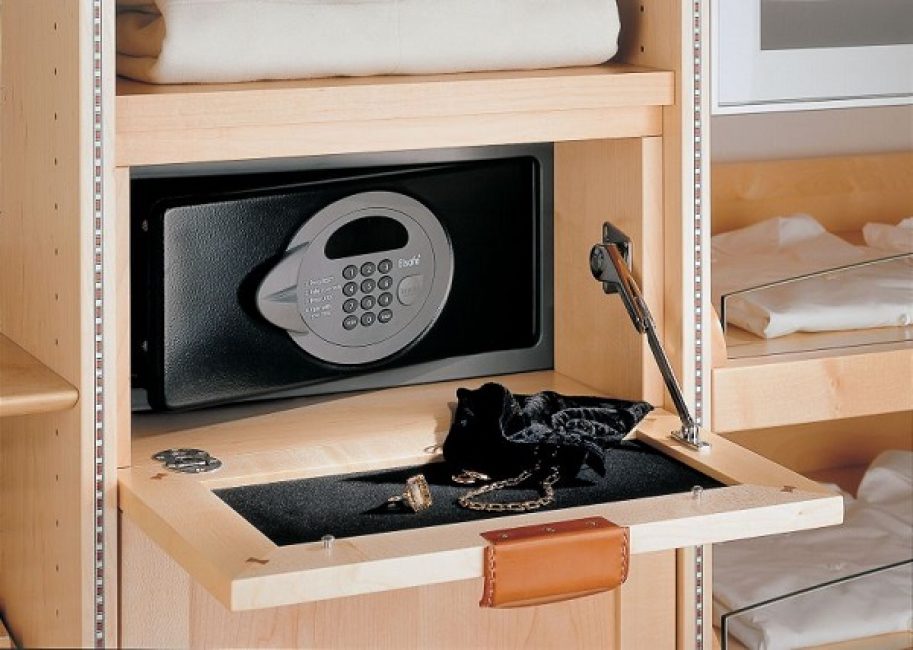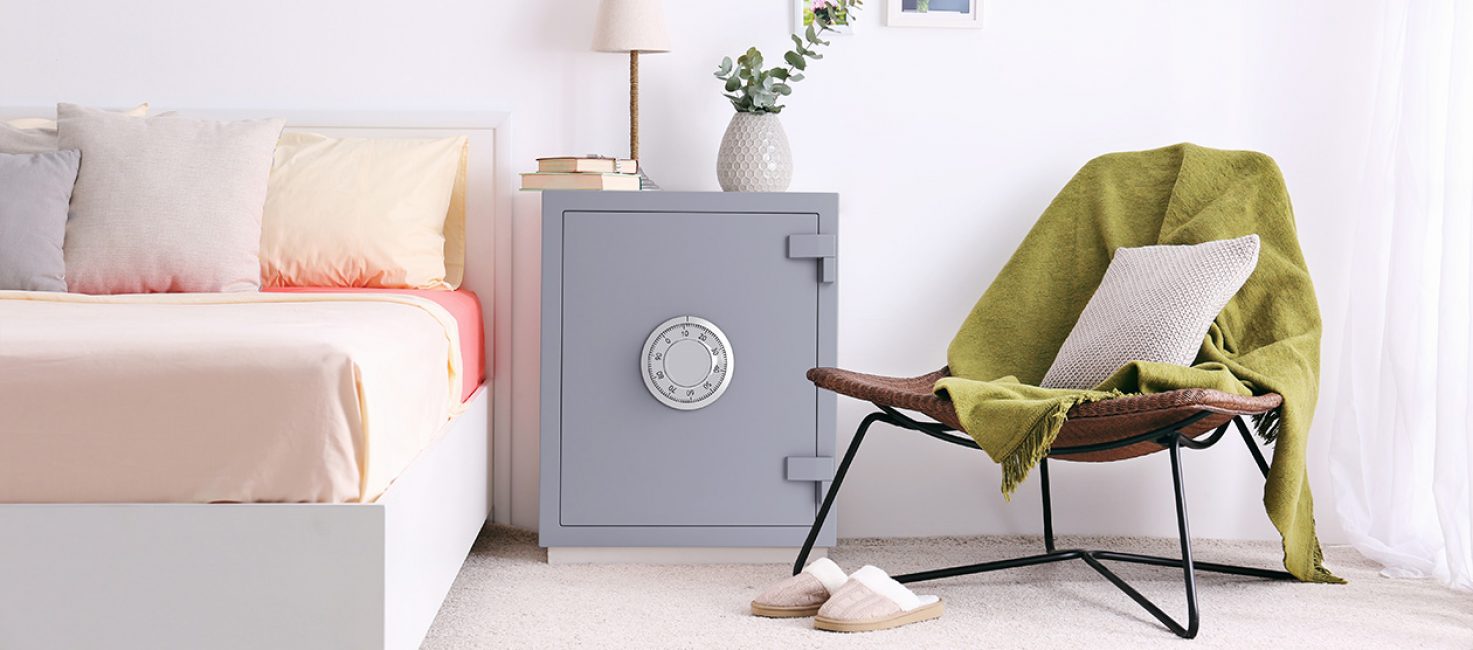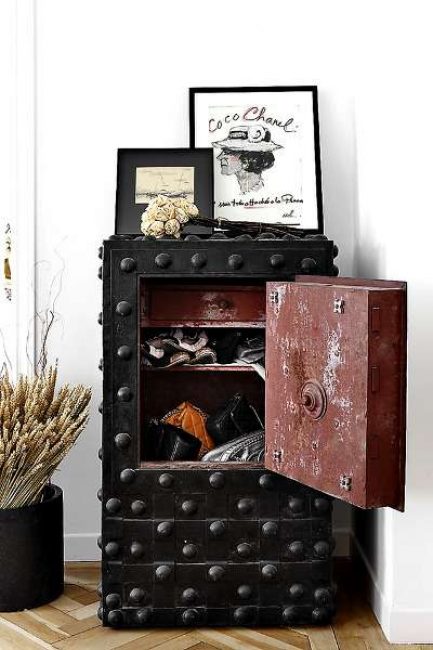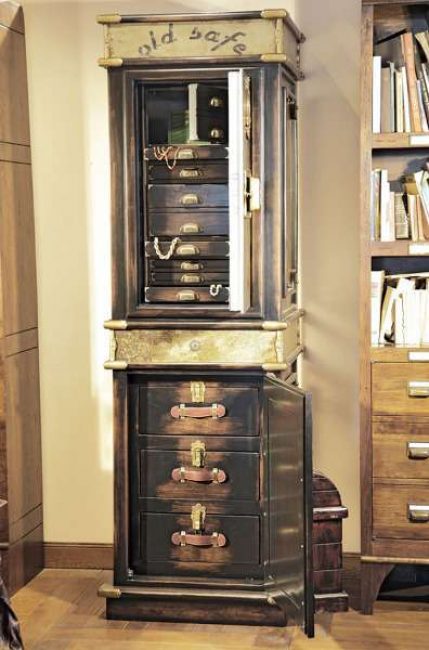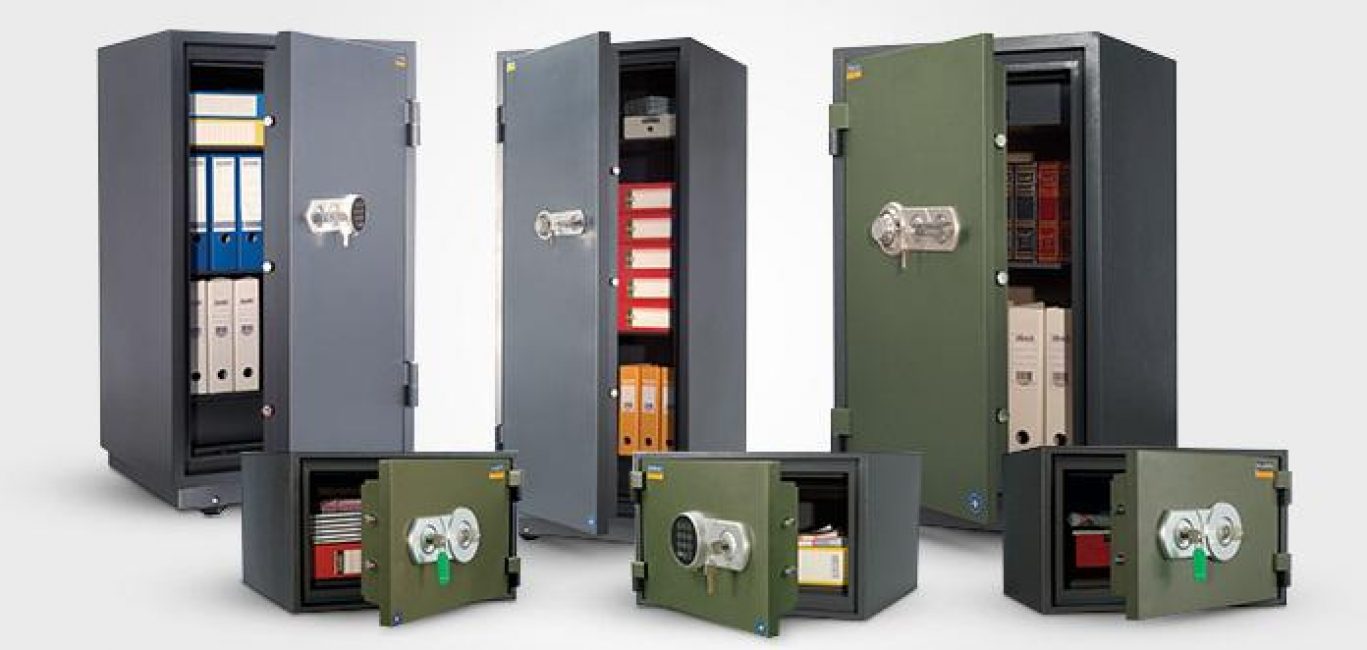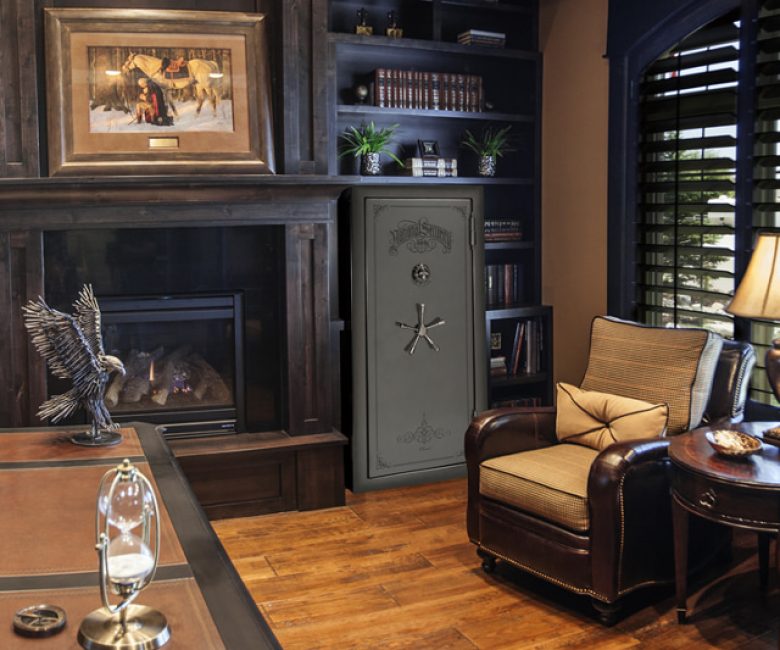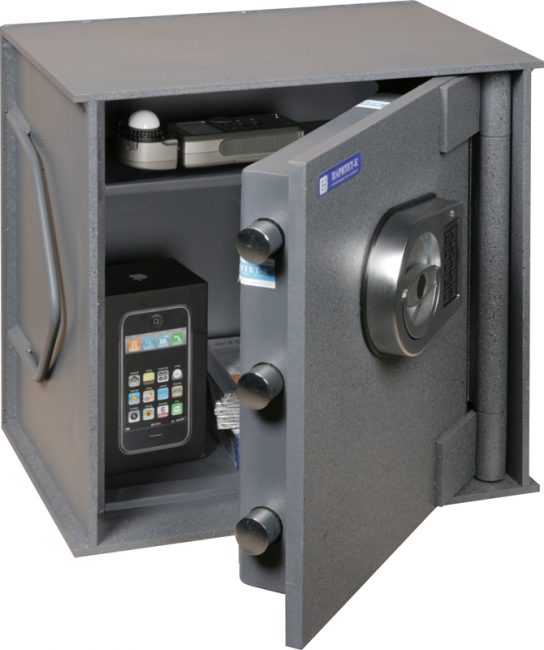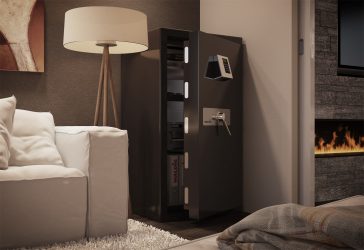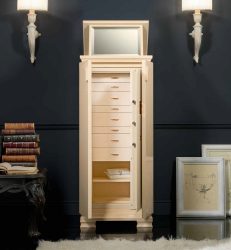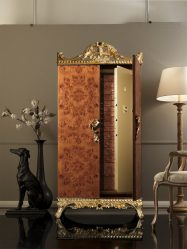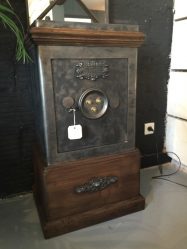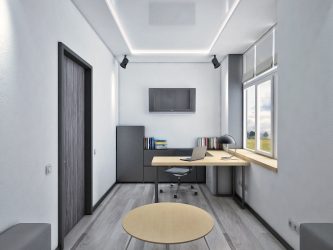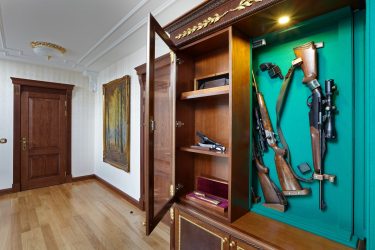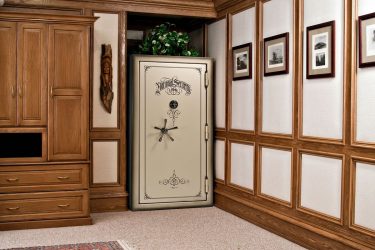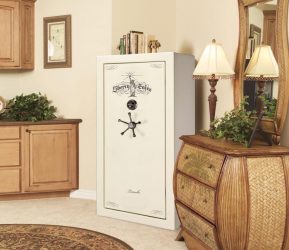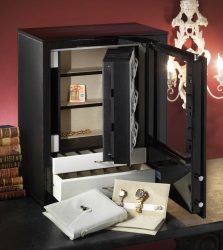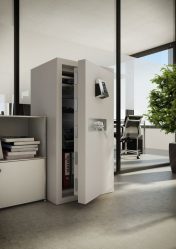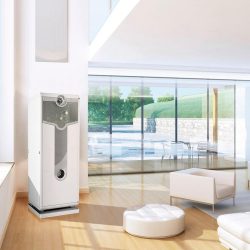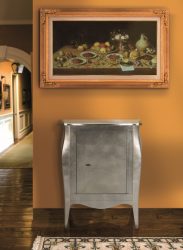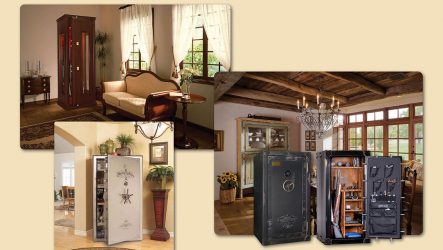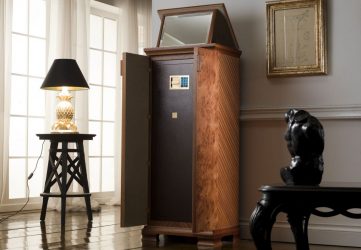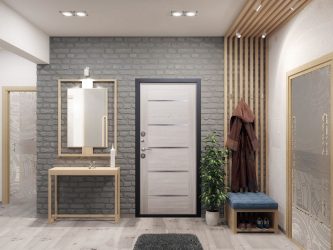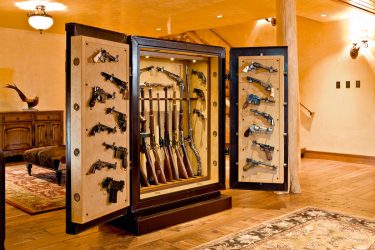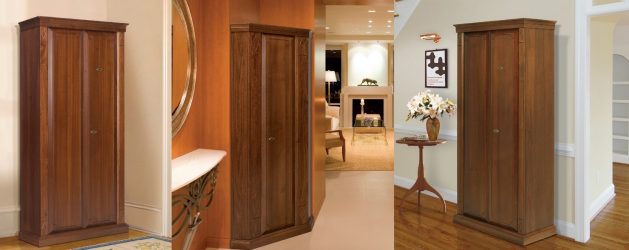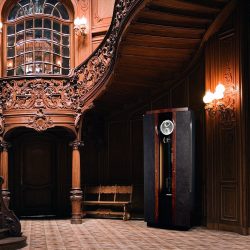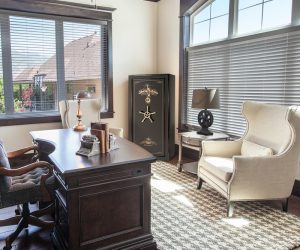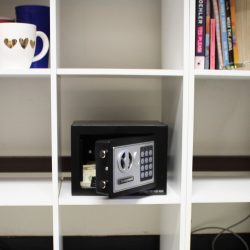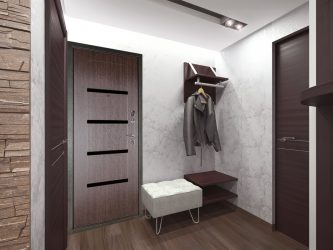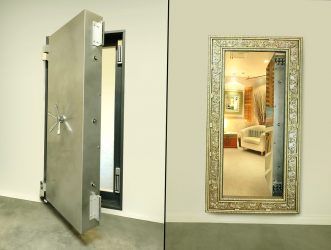
A safe in the interior of the house is not an ornament, but its safe potential. From this basic value we shall make a start. Consider the most important nuances that will help make the right choice.
Content of this article:
Selection features
A wide selection of safes on the market can sometimes make it difficult to choose for a particular storage requirement. There are many test standards, technical specifications and safety ratings. Therefore, the purpose of this guide is to help make an informed product choice by highlighting various issues for consideration.
Characteristics of the high quality safe:
- varnish, high-quality paint;
- high-quality microzamsha inside;
- the back of the interior is lined with reflective material, improving visibility;
- handmade boxes made of hardwood with a light slip;
- individual box interiors;
- integrated lighting;
- option for high-quality, programmable clock;
- electronic or biometric (fingerprint) sensor with a high degree of protection.
What to buy?
First of all, it is important to consider the physical nature of the items that should be kept safe.
Confidential data and irreplaceable documents are the main candidates for protection from fire and other hazards. Test criteria and classification are focused in three main categories of information and presentation:
- documents: for example, passports, certificates, insurance policies, legal documents and cash;
- digital media: for example, USB / memory cards, DVDs, CDs, digital cameras, iPods, MP3 players and external hard drives;
- computer / magnetic media: for example, computer backups, computer floppy disks (floppy disks), traditional internal hard drives, video tapes and sound tapes. Cellulose-based materials such as film, negatives, transparencies and microfiches are almost as vulnerable to fire as data carriers, and therefore they need to be stored in fire-resistant models.
To decide whether it should have fire-fighting properties, you need to take into account the temperature at which the contents begin to lose their properties:
- paper: 177 ° C;
- figure: 120 ° C;
- film: 66 ° C;
- computers: 52 ° C.
Computer data must also be protected from electromagnetic interference from fire, as this will damage information.
However, increasing the level of humidity inside can also be a danger to vulnerable media and film.
The critical levels above which such items begin to deteriorate are as follows:
- film: humidity 85%;
- computers: humidity limit up to 80%.
While, strictly speaking, there is no such thing as a “fireproof safe”, that is, completely safe, immune to fire damage. This term is often used by homeowners and businesses when describing, which will protect their values in case of fire.
It is important to recognize that no matter how safe and designed it is to protect your valuables from fire. At best, a safe will protect your valuables from fire for several hours.
For this reason, the term "fireproof safe" is usually preferable. He acknowledges the fact that all safes designed to protect against fire will simply withstand fire damage for a certain period of time.
return to menu ↑Types of safes for home
Obviously, the security requirements from unauthorized access under normal operating conditions is important because of the confidential and / or valuable nature of the items stored in it. There are two main types of locking devices for safes: mechanical and electronic locks.
return to menu ↑Mechanical
Their keys (except for underground models) are usually supplied in duplicate, which, which may be a problem, if, for example, one of the copies is lost. The worst case scenario is that the entire lock will need to be replaced. However, the technical characteristics of such a locking device tend to become more complex and provide a high level of security with traditional keys.
An additional level of protection is provided by the key combination lock, in which the combination disk is located next to the cylinder lock. This provides double security, with one owner can only know the combination, and the other - only the key.
The first lock can be either a fixed wheel installed on a certain combination for the whole life, or a replaceable combination that will cost more.
return to menu ↑Electronic
Electronic locks are powered by batteries, which can be located either inside or outside. In the first case, when the battery is disconnected in an emergency, the key is always redefined, which leads to blocking.
It is also possible that a digital lock with programmable codes includes an audit trail in which individual key codes were associated with individual users.
This allows you to create an entry for those who turned to the safe and when it is displayed on an integrated screen using a control code or, in more complex versions, in a downloadable form on a laptop.
In recent years, technological advances have led to the creation of a biometric lock, which depends on the recognition of fingerprints or iris. Biometric fingerprint recognition can hold up to 100 usersIt includes some non-flammable models, and, of course, is an innovative technology that creates a model for the future.
return to menu ↑Fireproof
Depending on the specific model, a fireproof safe can provide:
- 30 minutes of fire protection (minimum);
- 60 minutes of fire protection (medium);
- up to 120 minutes of fire protection (high level).
Fireproof safes are available at various levels of resistance to burglary:
- Basic security. Fire resistant models that provide only a basic level of resistance to cracking are usually lightweight boxes made from a minimum amount of steel. They can be compact in size and built into furniture or other items in the house. This type is relatively inexpensive and can be useful for protecting valuables from fire and storing valuables from personnel, guests, roommates, etc. However, they are not very resistant to burglary and cannot provide an adequate level of resistance.
- Class B. Class B safety safes are more reliable than fireproof, providing only basic security. They have doors that are made of steel with a thickness of at least 1/2 inch. Their body is made of at least 1/4 ″ steel. Almost always come with a 1/2 ″ recessed anchor hole located in the center of the base for mounting on the floor. This type also often has additional protective functions built into them, such as locking devices, rigid plates, resistant to drilling, large locking and higher-quality bolts. Class B also has more secure and reliable locking mechanisms with a combination of keys and a keyboard.
- Class C is similar to class B, except it is made of thicker steel. Class C safes have doors that are made of at least 1 ″ steel. Their body is made of at least 1/2 ″ steel.
- TL-15 / TL-30 +. Rarely used in residential premises, with an instrumental coating, they are designed to counter fire damage and complex burglary attempts in short periods of time.
Some values, such as photographic negatives, analog film, and outdated computer backup media, such as floppy disks and magnetic tape, are particularly sensitive to the damaging effects of heat and begin to deteriorate at temperatures significantly less than 176 degrees - a litmus test for a fireproof safe designed for document protection.
To protect these types of values, they should be stored in the media safer.
Water resistant
Protecting against critical levels of moisture inside is not the same as water resistance (although some safes do offer the latest feature). Watertightness refers to hazards associated with water from external sources, such as sprinklers, hoses, or even flooding to a depth of several meters. This type of protection is achieved, for example, by installing hermetic, waterproof seals to the doors in the internal compartments.
return to menu ↑Design and installation methods
Many safes are designed to be fixed on a fixed object in order to prevent their removal during a hacking attempt. Safes that withstand fire resistance for 60 or 120 minutes can only be mounted on the base, usually usually through a recessed hole located in the center of the base. They should never be fixed through the back wall. This will compromise or eliminate the fire resistant construction.
This is due to the fact that fire protection is designed in such a way as to make the interior comfortable during a fire.
A typical construction has a double-walled steel case, the cavity of which is filled with a special fire-resistant composite. Although this composition may vary between brands, it will contain a hydrate, such as alum or gypsum, which releases water vapor when heated. Part of this water vapor is directed inward, where it serves both to regulate the internal temperature and to create pressure against external heat from the fire.
This allows some couples to go out into the fire. These high-precision structural elements enhance the fire resistance of the safe. It is designed in such a way that all gaps are sealed when the materials used to protect the interior react to a fire. For example, the skin installed on the main door and in any compartments inside, as well as the inner edges of the door, which swell in the midst of the flame and hermetically close the safe.
return to menu ↑VIDEO: Variants of safes for home, car and travel
Mini travel safes
How to keep valuable items on a trip?

